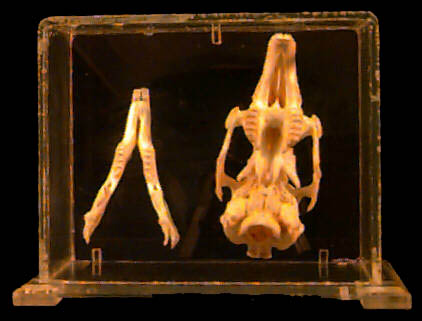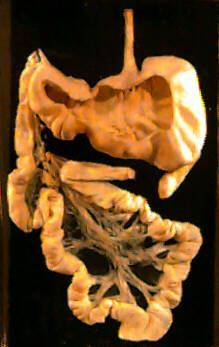
LAGOMORPHS
CLASS MAMMALIA
SUBCLASS THERIA
INFRACLASS EUTHERIA
ORDER LAGOMORPHA
There are two families in the Order Lagomorpha - the hare-shaped animals:
- Family Leporidae: the 58 species of rabbits and hares in 11 genera occur in a wide range of habitats - woods, forests, swamps, deserts, mountains, grass-lands, the snow-covered artic and, most importantly agricultural lands - throughout the world.
- Family Ochotonidae: the 29 species of guinea pig-like, pikas belonging to the genus Ochotona live in rocks in mountainous areas and in burrows in alpine meadows, steppes or semi-desert in Central Asia, China and Western North America.
Lagomorphs have long, soft fur. Their ears are large, and eyes are set high on their heads, giving them a wide field of vision. The neck is weak but flexible, allowing them to turn their heads more than rodents.
Lagomorphs are no more closely related to rodents than to any other Order of Mammals, in spite of certain marked similarities in their dentition and diet.
All lagomorphs are herbivores living mostly on grasses. Their cheek
teeth are adapted for grinding their abrasive food and they have two pairs
of characteristic incisors:
The dental formula of rabbits and hares is: I2/1; C0/0; P3/2; M3/3. |  |
|
Lagomorphs have special adaptations to help obtain nutrients from a diet comprising large quantities of grasses.
|
 |
Family Leporidae
We have specimens of the European rabbit and European hare. Although these European lagomorphs are not under threat, many less well known rabbits and hares are threatened due to the destruction of their habitats.
Both rabbits and hares have long-limbs, especially hares, and are adapted to moving
rapidly over open ground. They have long ears, an elongated nasal region,
and a white underside to the tail. Although physically rather similar,
the two groups have some very marked differences in behaviour,
physiology and reproductive strategies. Rabbits are varied and classified into 10 genera; hares are
classed together in the genus Lepus.
RABBITS
|  |
HARES
|  |
RABBITS AND HARES
Both rabbits and hares are solitary creatures for the most part. The sociable nature of the European rabbit, which lives in stable territorial groups in burrows in warrens, is exceptional. Only a few other rabbit species dig burrows; others use burrows made by other mammalian species.
Rabbits and hares are major sources of food for carnivorous mammals and birds and have a number of adaptations to ensure they maintain large populations. They reach sexual maturity early and the females
- have short gestation periods and large litters;
- their eggs are shed in response to copulation (not cyclically);
- can conceive immediately they have given birth.
Although highly successful reproductive strategies have turned some species, including the European rabbit, into significant agricultural pests, lagomorphs, especially the European rabbit, have proved very useful to humans for food and fur.






